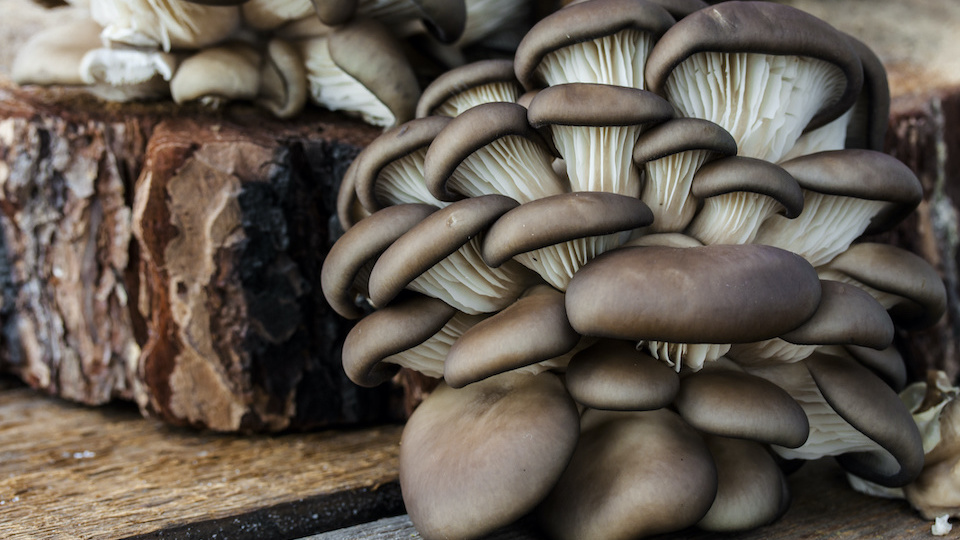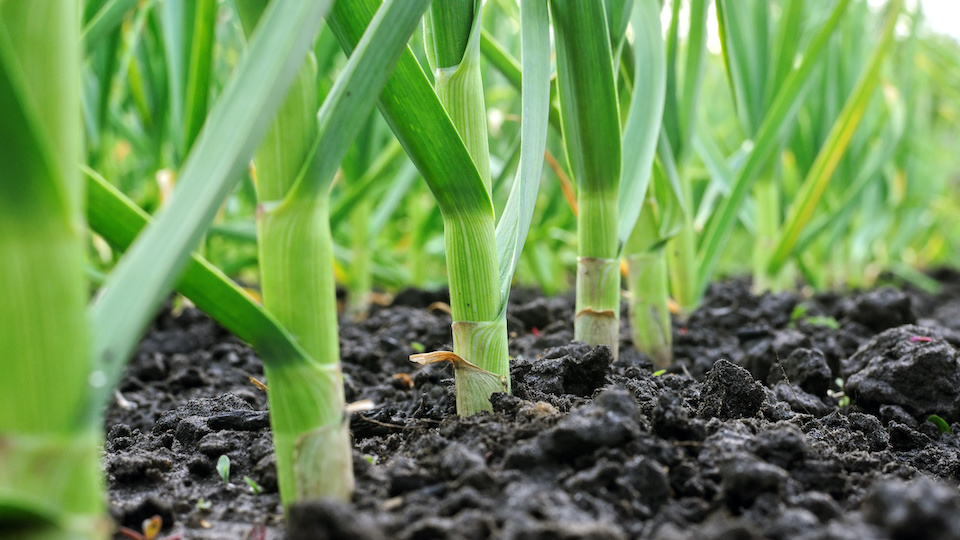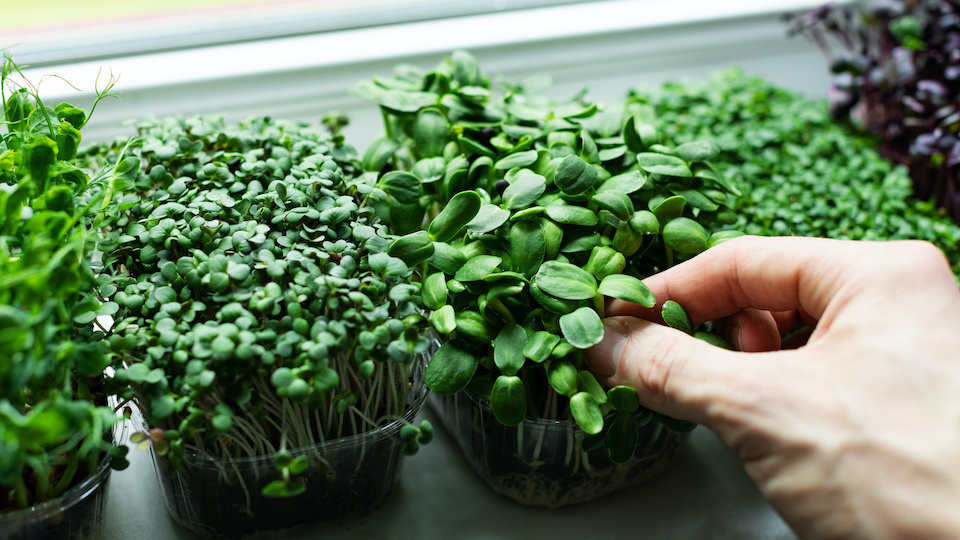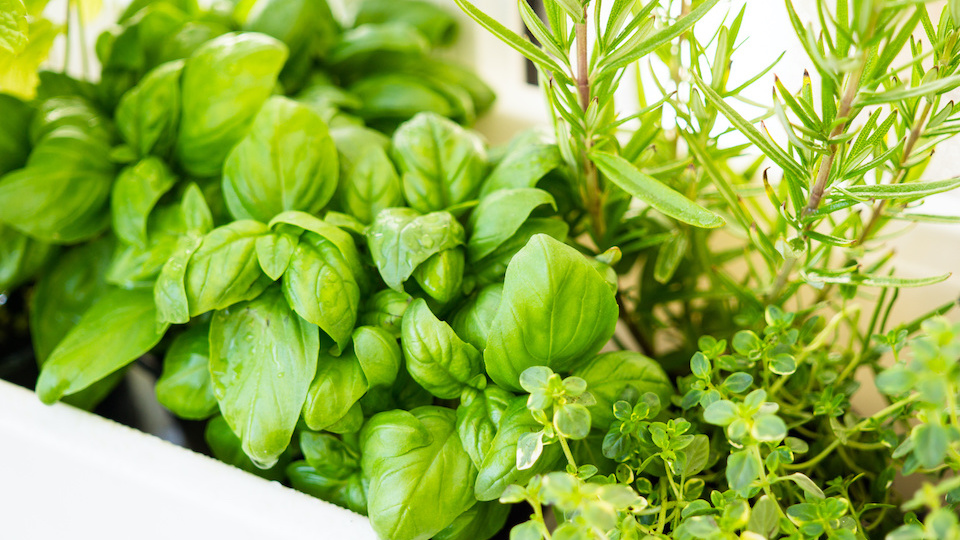Gardening is a fantastic hobby and a way to provide fresh food for your family. Did you know that that it can also be lucrative? What if I told you that you could accelerate your savings by growing some popular cash crops? There are even some great options for people who have limited space in which to grow plants. Now that I have your attention let’s take a look at how your garden can keep you in the green (if you know what I mean).
Edible Mushrooms

Here is a fantastic opportunity for urban farmers. Gourmet mushrooms can be grown indoors and produce a tremendous return per square foot. Shitake and oyster are the most widely grown and popular varieties. Oyster mushrooms are highly productive, producing about 25 pounds per square foot of growing area each year. These mushrooms bring about $7 a pound, which means you can bring in an extra $17,500 worth of income if you grow in a 10×10 foot space.
Garlic

There are three types of gourmet garlic, also known as hard neck garlic, including Rocambole, Purplestripe, and Porcelain. This delicious garlic is so popular that it sells for up to $10 per pound. Another popular variety to grow is Elephant garlic that brings about $6-$8 a pound. Half an acre of Elephant garlic can yield up to 7,500 pounds! Known as the “mortgage lifter,” garlic is a very hardy crop that tolerates a wide range of soil conditions and all sorts of weather.
Bonsai plants

Bonsai plants range from tiny trees to mature maples and pines that are just 18 inches high. You can grow a thousand plus miniature bonsai trees in a tiny backyard bonsai farm that is only 40×50 feet. Marketing bonsai trees as gifts hit a market sweet spot and these little trees sell for $40-$60 each. You can sell starter trees while mature bonsai trees are growing to help keep a steady income flow. Popular varieties include Chinese elm, Japanese maple, birch, and hornbeam.
Succulents

Although you can start many beautiful succulents from cuttings, you can also purchase small succulents in mini plug trays and make beautiful arrangements to sell. Succulents come in all sorts of shapes, colors, and textures and are more popular than ever. They are easy to care for and have low water requirements, making them a perfect plant for busy people. While all cacti are in the succulent family, not all succulents are cacti. Some popular types include agave, sedum, and sempervivum. Think outside the box with this one – succulents are happy in any container as long as it has drainage holes and you use a lightweight potting mix. Either way, you go – growing your own succulents or creating beautiful succulent arrangements, the market is there to support a thriving side business with these popular plants.
Microgreens

First introduced to the California restaurant scene in the 1980s, a new and delicious trend has been sweeping the nation. Five-star chefs are using them in their best dishes. Health enthusiasts embrace their nutrient density. And now, more and more people who want to experience the joy of growing their own food and even making a profit from it are digging into growing their own microgreens (AKA micros).
Microgreens are mini plants, the seedlings of herbs, grains, legumes, and vegetables. They are miniature versions of full-size plants and loaded with nutrition. If you are looking for a side business that has a great ROI (return on investment), microgreens are for you. There has never been a better time to start your very own microgreens business. There is an excellent opportunity to capitalize on an increased interest in buying fresh food locally. Plus, not too many people are growing these tiny plants, so the competition is still relatively weak. Although there are variables to consider, producing a few main types of microgreens can bring in about $20 per tray on average. If you invest about 20-30 minutes per day growing the greens, you make about $40-$60/hour. Not a bad return on your time!
Wheatgrass

Wheatgrass is the grass in wheat crops that is cut before the sprouting of the wheat grain. This super grass contains over 100 elements needed by man. Most commonly consumed as a power-packed juice, just one ounce of wheatgrass juice is equivalent to two pounds of produce nutritionally. Wheatgrass is ready for harvest when it reaches 4 to 6 inches in height, which takes about 6-8 days. You can generally get two good cuttings from one planting. As far as profitability goes, wheatgrass has tremendous potential. Small trays, usually 10”x 10”, use 1 cup of seed and yield up to 10 ounces of juice. You can make money selling trays of wheatgrass or wheatgrass kits, including the tray, growing medium, and seeds.
Heirloom tomatoes

Tomatoes, especially delicious heirloom varieties, are a popular item for chefs, local grocers, and local farmers’ markets. At present, the demand for these tomatoes is high, and it doesn’t show any signs of slowing down. Plants take about 2 to 3 months from planting to harvest and require minimal care once planted, maybe a few hours a week, tops. But, what kind of money can you actually make selling tomatoes? Heirloom tomatoes sell for an average of $4 to $5 a pound. A growing space of just 600 square feet can produce between $8,000 and $10,000 at the going rate. Not too bad for a side-growing gig!
Cut flowers

Everyone loves a fresh-cut bouquet of flowers, right? Not only are cut flowers easy to grow, but small growers can expect to make about $30,000 per-year per-acre of flowers. Start-up costs are low, and most people have what it takes to be successful without investing a ton of money. Selling cut flowers at your local farmers’ market is an excellent place to start. Stick to proven winners like sunflowers, peonies, zinnias, snapdragons, salvia, and yarrow.
Herbs

Not only is growing herbs fun, but it can also be extremely profitable. Popular plants include basil, chives, cilantro, oregano, parsley, chamomile, and lavender. There are several ways to make money with herbs, including starting and selling plants or harvesting and selling fresh-cut herbs. Growing specialty herbs for local chefs can be quite lucrative once you make a few connections.
Are you ready to get growing?
Remember, it all starts with a seed of desire – to generate some extra income. Do your research, study your local market, determine which crop suits your lifestyle best, and go for it!
Happy Growing,
-Susan, CBHC and Master Gardener




